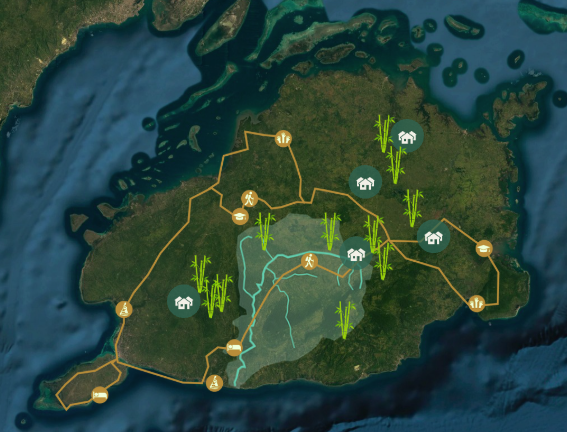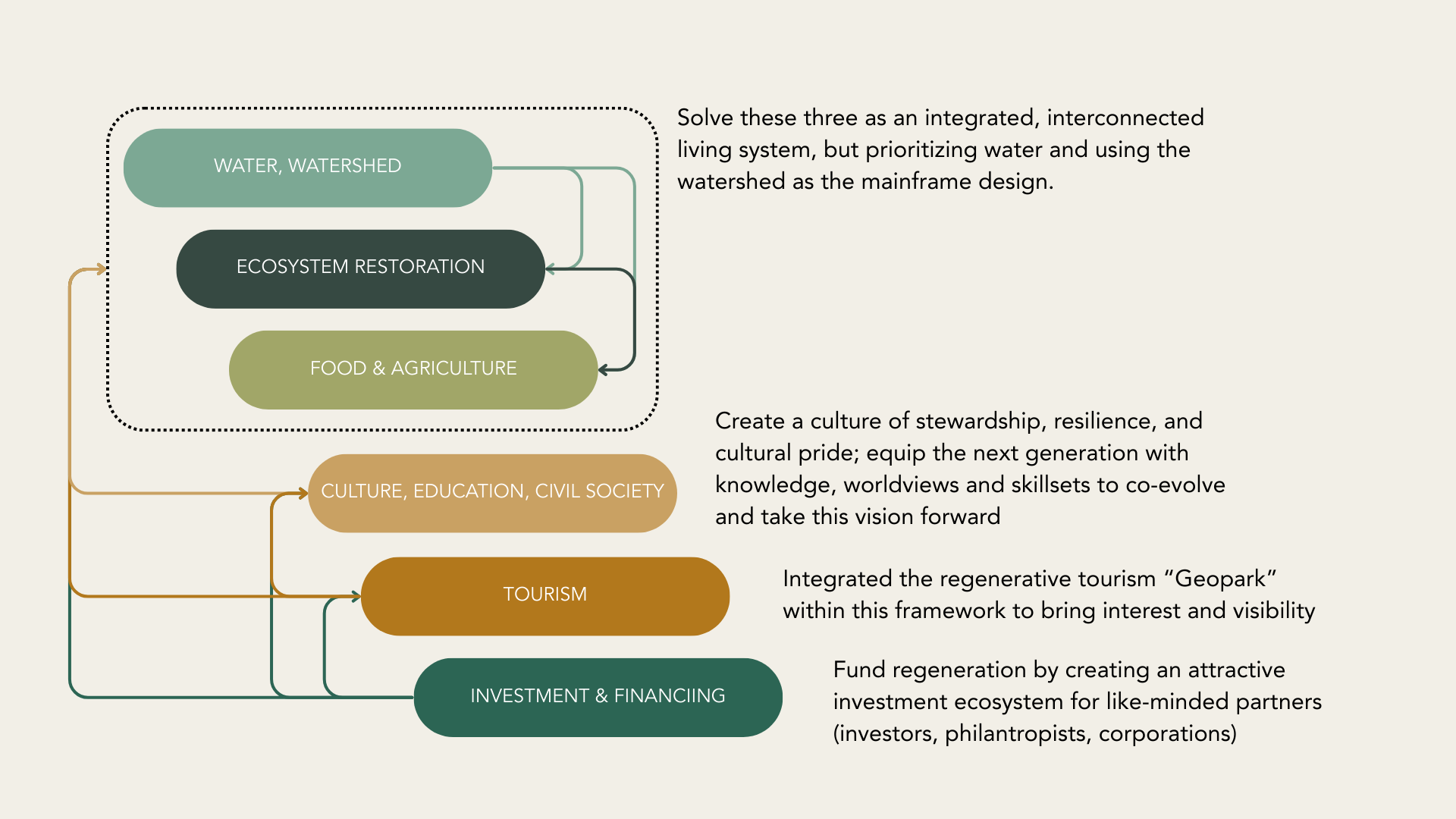Bohol Regenerative Island Framework
We established our base in Bohol Island—home to the iconic Chocolate Hills, diverse marine ecosystems, and rich biodiversity. This island province has a population of over a million Boholanos and offers insights into both the opportunities and challenges facing island communities across Southeast Asia.
Two years after beginning our work here, the provincial government asked us to present our vision for Bohol's future. We proposed an ambitious goal—what if Bohol became the Philippines’ first regenerative island?
The concept resonated with local leaders. After collaborative workshops with provincial officials, communities, and stakeholders, Governor Aris Aumentado signed an Executive Order launching the Bohol Regenerative Island Initiative, making regeneration the province's official development framework.
The Challenge: Paradise Under Pressure
Bohol is renowned for both its tourism attractions—particularly the iconic Chocolate Hills—and its abundant natural resources. However, this island paradise faces interconnected challenges that threaten its long-term sustainability.
From Lush Forests to Degraded Landscapes
Once covered in lush forests, Bohol has undergone significant deforestation over decades. Today, 30% of the province's land area consists of sloped terrain that have become disturbed and exploited, particularly for subsistence farming. This widespread land degradation has left upper watersheds as marginal land unable to provide essential ecosystem services.
Water Insecurity Despite Agricultural Land Use
Water security has become a critical issue despite Bohol being primarily agricultural in terms of land use. The province faces recurring drought challenges that significantly impact water availability for both agriculture and communities. During drought periods, water supplies become critically low, affecting agricultural productivity and forcing communities to rely on intermittent water supply systems.
Food Import Dependency and Rising Costs
Food security presents another paradox: despite having significant agricultural land, Bohol imports much of its food, making it vulnerable to supply chain disruptions and price fluctuations. As soils deteriorate, farmers face rising costs for inputs like fertilizers and pesticides to maintain productivity, exacerbating rural poverty. This import dependency and increased production costs drive up food prices, which in turn makes tourism more expensive and less competitive.
Balancing Tourism Development with Conservation
Tourism itself creates complex trade-offs. While the Chocolate Hills and coastal areas generate vital economic benefits, development pressures in these protected areas raise questions about how to balance economic needs with environmental conservation. The high cost of food also inflates tourism costs, affecting competitiveness.
Climate Change as a Threat Multiplier
Climate change will only exacerbate these interconnected challenges. Super Typhoon Rai (Odette) in December 2021 demonstrated the island's vulnerability to extreme weather events, with damaged infrastructure and communities struggling to recover. Future storms will compound existing problems with water security, agricultural productivity, and tourism infrastructure.
These challenges are interconnected—symptoms of a development model focused on extraction rather than regeneration.
The Framework
The Bohol Regenerative Island Framework addresses these interconnected challenges through an integrated approach that treats the island as a living system. Rather than isolated interventions, we design solutions that strengthen the whole while healing each part.
Water & Watershed: The Foundation
Water forms the foundation of all island life. Our framework prioritizes comprehensive watershed restoration, using the watershed as the main design structure that connects mountains to sea. By restoring degraded upper watersheds and implementing regenerative water management, we create the foundation for all other regenerative activities to flourish.
Ecosystem Restoration: Healing the Land
Systematic restoration of Bohol's degraded landscapes—from karst forests around the Chocolate Hills to coastal mangrove systems—creates the biological infrastructure for resilient communities. Restored ecosystems provide natural water retention, climate adaptation, and biodiversity recovery while generating sustainable livelihoods through restoration work and regenerative agriculture.
Food and Agriculture: From Import Dependency to Self-Reliance
Regenerative agriculture transforms degraded farmland into productive, resilient food systems that reduce import dependency while rebuilding soil health. Through permaculture, agroforestry, and community-supported agriculture, we create food security that strengthens rather than degrades the landscape.
Regenerative Tourism: The Bohol Geopark Vision
Tourism becomes a force for regeneration through developing Bohol as a regenerative geopark. Visitors participate in restoration activities, learn regenerative practices, and contribute directly to landscape healing. This creates compelling experiences while generating revenue that funds ongoing regeneration.
Culture, Youth & Education: Building Regenerative Stewardship
Creating stewardship culture requires engaging communities, especially youth, as active participants in regeneration. Educational programs, cultural revitalization, and community leadership development equip the next generation with knowledge and skills to carry the regenerative vision forward as their own.
Investment & Finance: Funding Regeneration at Scale
Sustainable financing makes regeneration economically viable by creating attractive investment opportunities for aligned partners. By demonstrating measurable regenerative and financial returns, we build an investment ecosystem that funds long-term transformation rather than extraction.
The Integration: Watershed as Living System These elements function as an integrated living system, with watershed as the connecting framework. Water connects mountain forests to agricultural valleys to coastal reefs. Regenerative tourism brings visibility and funding to restoration. Education creates cultural foundation for stewardship. Investment provides capital for scaling interventions across the island system.








